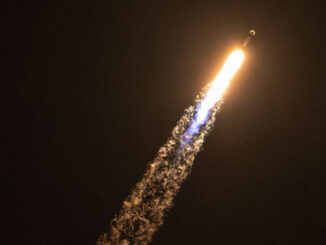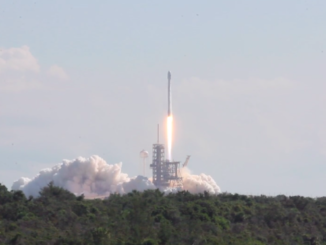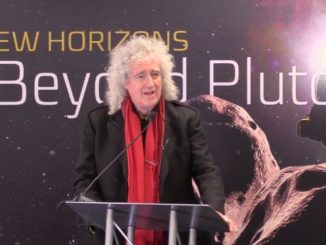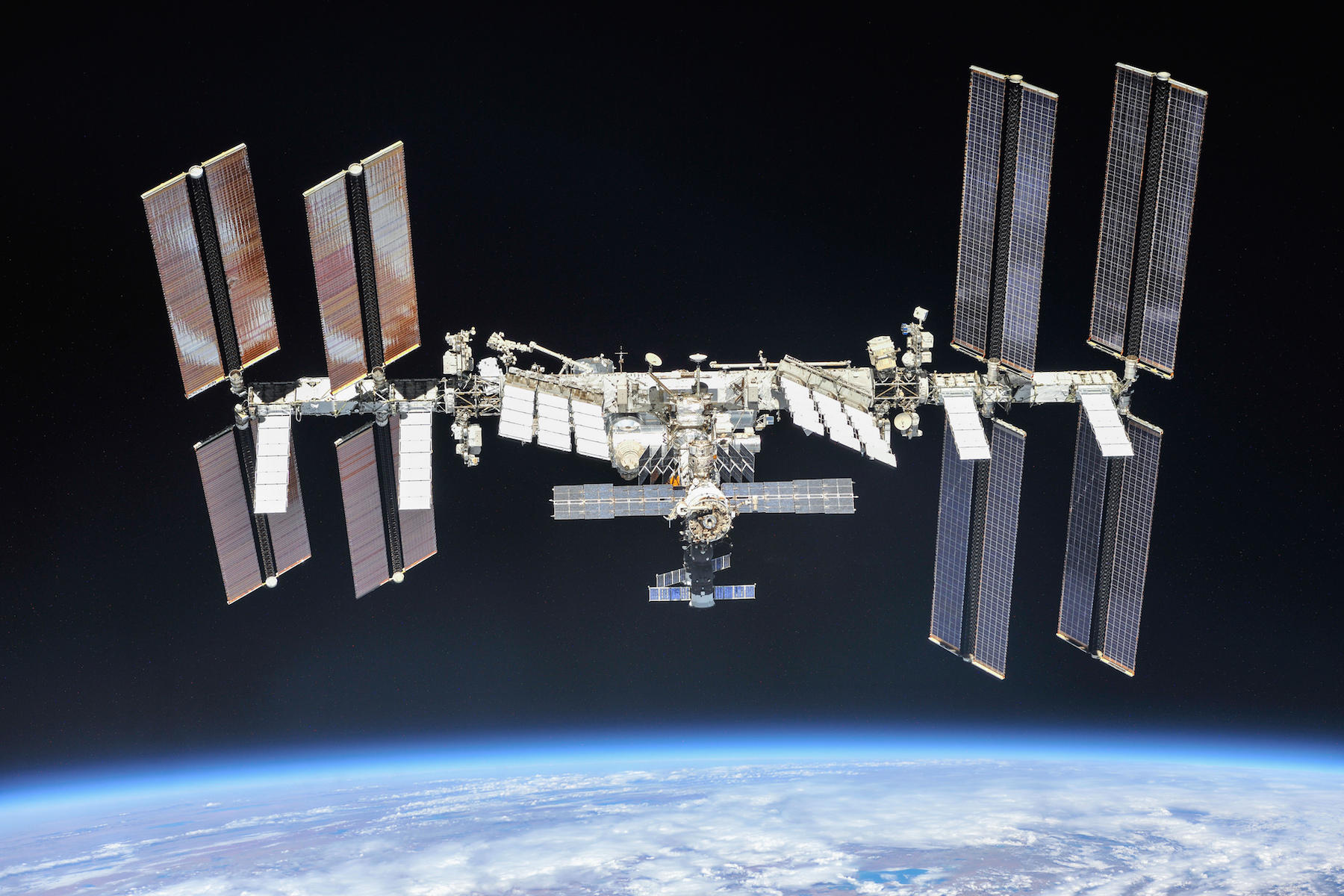
Axiom Space, a Houston-based company with plans to develop a commercial outpost in space, announced Thursday it has signed a contract with SpaceX to ferry a professional astronaut and three paying passengers to the International Space Station as soon as next year on the first fully private human spaceflight mission to Earth orbit.
The private crew members will spend at least eight days on the orbiting research platform, allowing them to enjoy “microgravity and views of Earth that can only be fully appreciated in the large, venerable station,” Axiom said in a statement.
Axiom said Thursday it has signed a contract with SpaceX to transport a commander “professionally trained” by Axiom and three private astronauts to the space station on a Crew Dragon spacecraft. The mission could take off as soon as the second half of 2021, Axiom said.
“This history-making flight will represent a watershed moment in the march toward universal and routine access to space,” said Michael Suffredini, Axiom’s CEO, in a statement. “This will be just the first of many missions to ISS to be completely crewed and managed by Axiom Space — a first for a commercial entity. Procuring the transportation marks significant progress toward that goal, and we’re glad to be working with SpaceX in this effort.”
Axiom says it plans to offer additional flights to the International Space Station for professional and private astronauts through a Space Act Agreement with NASA, which is looking to Axiom and other companies to develop a commercial market for human spaceflight in low Earth orbit after the space station’s retirement.
The private astronaut flight opportunities arranged by Axiom could launch as often as two times per year, the company said.
Self-funded space fliers to date have flown to the space station on Russian Soyuz spacecraft, joining crews comprised of government cosmonauts and astronauts.
SpaceX’s Crew Dragon spacecraft and Boeing’s Starliner capsule are only U.S. vehicles expected to be available to transport commercial crews to the International Space Station in the coming years. Both human-rated ships were developed in partnership with NASA, which has contracts with SpaceX and Boeing valued at a combined $6.8 billion to build the Crew Dragon and Starliner capsules and fly government astronauts to the space station.
The Crew Dragon and Starliner spaceships will end NASA’s sole reliance on Russian Soyuz crew ferry ships for astronaut transportation to and from the space station. The Soyuz has been the only spacecraft able to carry crews to and from the station since the retirement of NASA’s space shuttles in 2011.
SpaceX is gearing up for the first Crew Dragon test flight with astronauts on-board later this year. The mission, named Demo-2, could take off from NASA’s Kennedy Space Center in Florida as soon as May, following an unpiloted Crew Dragon test flight to the station in March 2019.
NASA astronauts Doug Hurley and Bob Behnken will fly on the Crew Dragon to the space station. If the test flight goes well, the Crew Dragon will be certified for regular crew rotation flights to the orbiting complex lasting up to seven months.
The Crew Dragon is designed to accommodate up to four people on launch and landing. On crewed missions, the capsule will take off on top of a SpaceX Falcon 9 rocket from pad 39A at the Kennedy Space Center, then splash down in the Atlantic Ocean east of Florida.
“Since 2012, SpaceX has been delivering cargo to the International Space Station in partnership with NASA and later this year, we will fly NASA astronauts for the first time,” said Gwynne Shotwell, SpaceX’s president and chief operating. “Now, thanks to Axiom and their support from NASA, privately crewed missions will have unprecedented access to the space station, furthering the commercialization of space and helping usher in a new era of human exploration.”
Although NASA supported development of the Crew Dragon, the SpaceX capsule — like Boeing’s Starliner — is available for other customers.
Last month, the space tourism company Space Adventures announced an agreement with SpaceX to fly paying passengers on a Crew Dragon spacecraft without going to the space station. Instead, the Crew Dragon will fly on its own in Earth orbit, reaching altitudes hundreds of miles above the space station to provide passengers a more expansive view of Earth.
Passengers for the Space Adventures mission or the Axiom-managed flight have not been announced, but possible clients could include wealthy adventurers, filmmakers, researchers and astronauts from nations with nascent space programs.
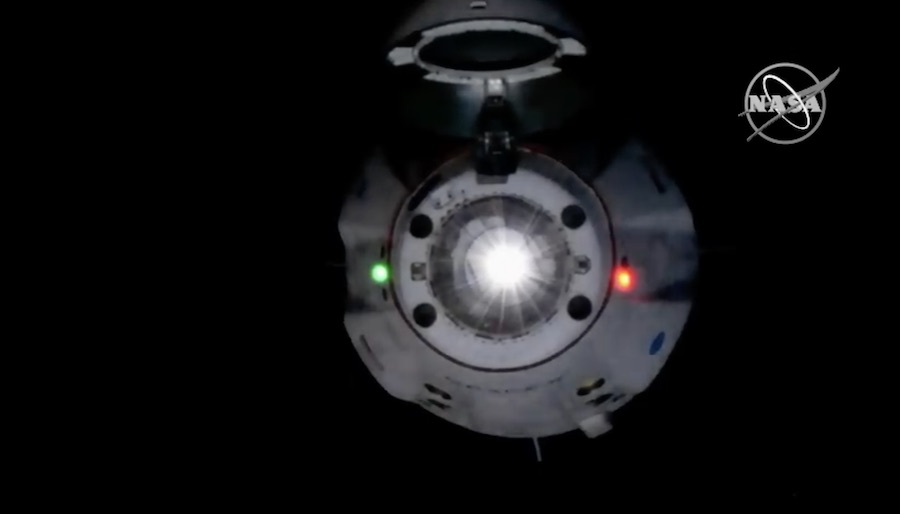
Boeing’s Starliner spacecraft, meanwhile, failed to dock with the space station on its first unpiloted demonstration flight in December. Boeing and NASA engineers are probing the spacecraft’s software after the capsule suffered multiple faults during its mission, which ended with an early landing after missing its rendezvous with the space station.
Officials have not said when the Starliner spacecraft could be cleared for a test flight with astronauts, or whether NASA will require Boeing to launch another unpiloted demonstration mission before proceeding with a crewed mission.
Led by Suffredini, a former ISS program manager at NASA, Axiom is developing a commercial habitat to be installed on the International Space Station as soon as late 2024. In January, NASA selected Axiom to provide a module for an open port on the station in a step toward development of a commercial replacement of the International Space Station.
NASA announced last year it would solicit proposals from companies to provide a module to connect with the open port on the ISS. At the same time, the agency announced a pricing structure for private astronauts who launch on Boeing or SpaceX commercial crew spacecraft to live and work aboard the research outpost.
NASA is negotiating with Axiom on a firm-fixed price contract to provide at least one commercial module on the International Space Station. But Axiom has more ambitious goals.
Axiom says it plans to build and launch several modules to form the “Axiom Segment” of the International Space Station.
The privately-funded elements planned by Axiom include a node module, an orbital research and manufacturing facility, a crew habitat, and a “large-windowed Earth observatory” that is similar in appearance to the International Space Station’s cupola module. Axiom said the new commercial segment will add more research and habitation facilities to the ISS, and provide “novel avenues of research in areas such as isolation studies and Earth observation.”
Research currently conducted on the ISS could be transferred to the new commercial facility gradually to prevent interruptions with the ISS is retired, according to Axiom.
In parallel with the development of a commercial space station, Axiom says it will launch a series of “precursor missions” to the ISS with private astronauts, the first of which was announced Thursday.
Axiom says it oversee training, mission planning, hardware development, life support, medical support, crew provisions, hardware and safety certifications, on-orbit operations and overall mission management for the private astronaut flights.
While its initial partnership with NASA is focused on connecting a module and flying private astronauts to the International Space Station, Axiom plans to detach its commercial modules when the ISS reaches its retirement date, forming a standalone, free-flying commercial orbital station. Before the International Space Station is decommissioned and the Axiom Segment is detached, Axiom aims to launch a solar power platform to provide the commercial modules the electricity and cooling previously provided by the ISS.
The industry team assembled by Axiom to work on elements of the commercial space station includes Boeing and Thales Alenia Space of Italy. Boeing and Thales built most of the pressurized modules on the U.S. segment the International Space Station.
Other partners identified by Axiom include Intuitive Machines and Maxar Technologies.
The U.S. government is in the process of approving an extension to NASA’s support for the International Space Station to 2028 or 2030. By that time, NASA managers hope commercial operators like Axiom could take over management of a replacement space station in low Earth orbit.
Email the author.
Follow Stephen Clark on Twitter: @StephenClark1.

